Golden Triangle with Forts & Palaces of Rajasthan
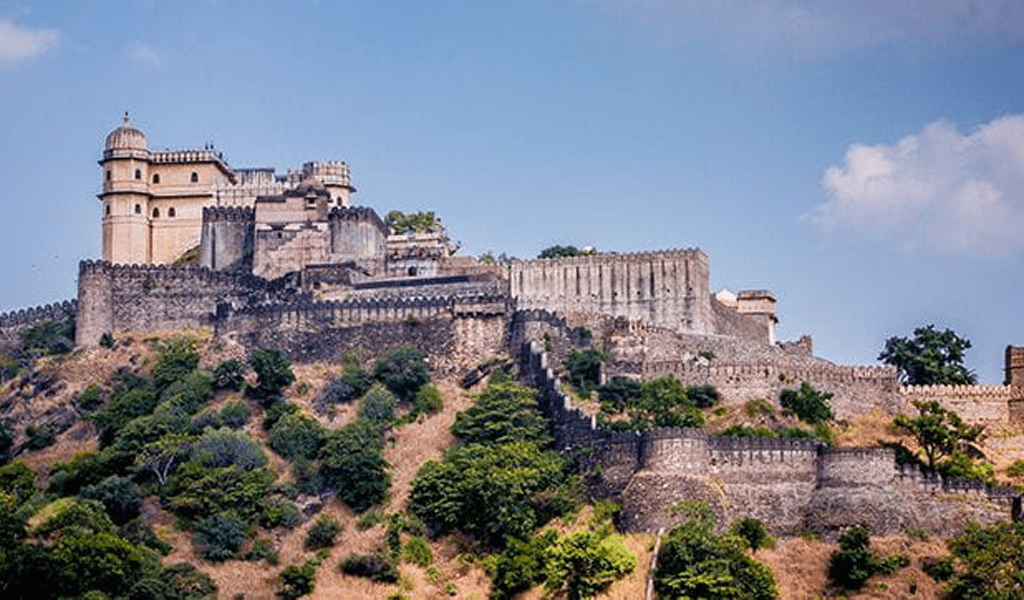
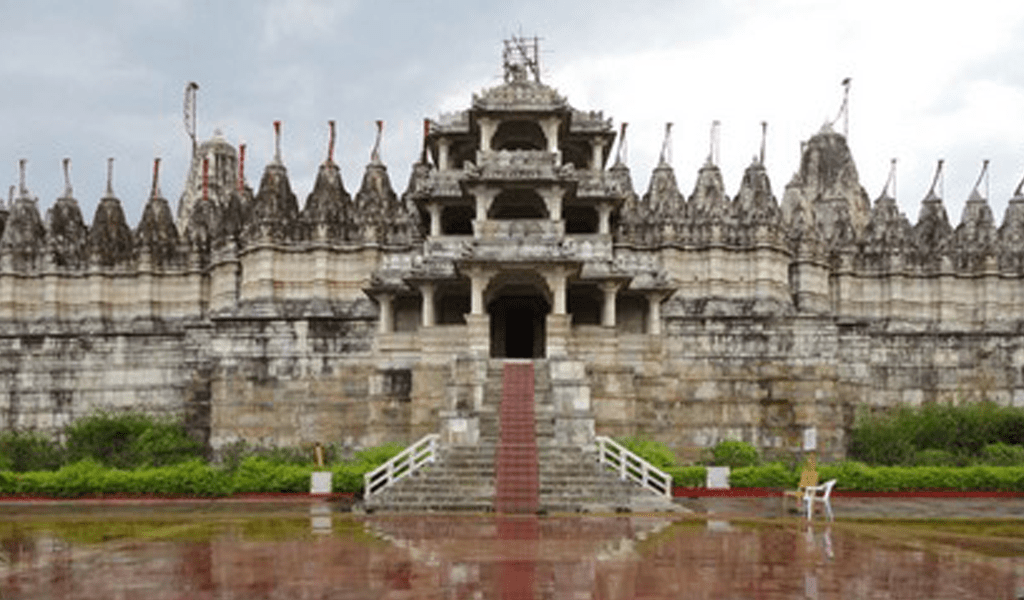
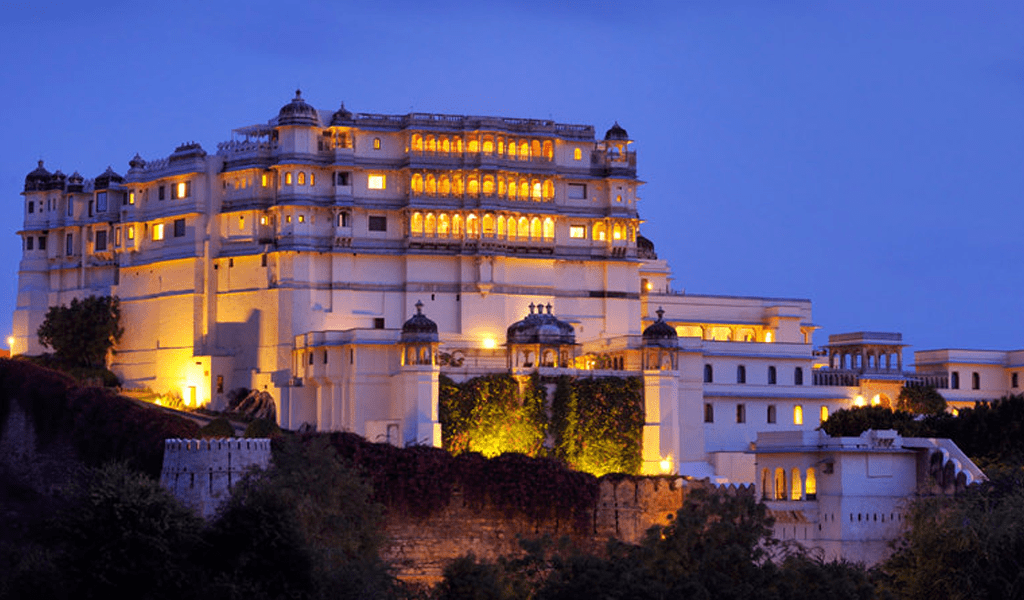
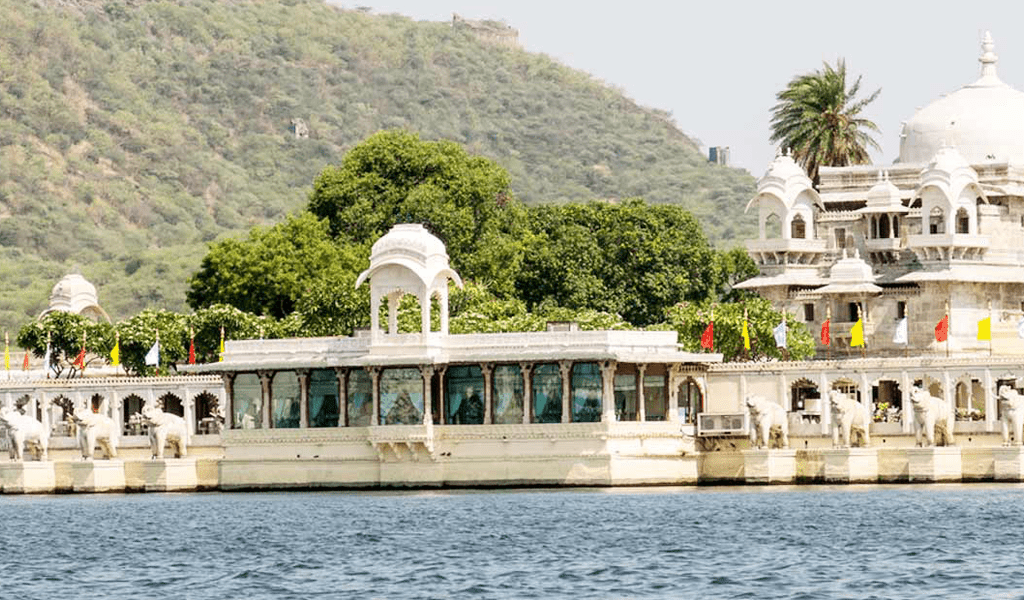
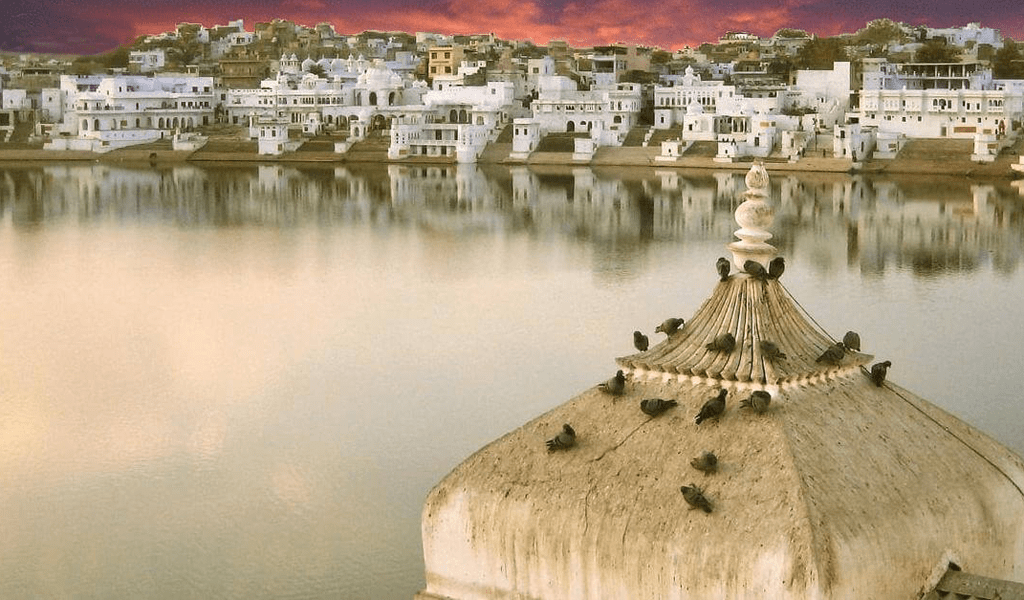
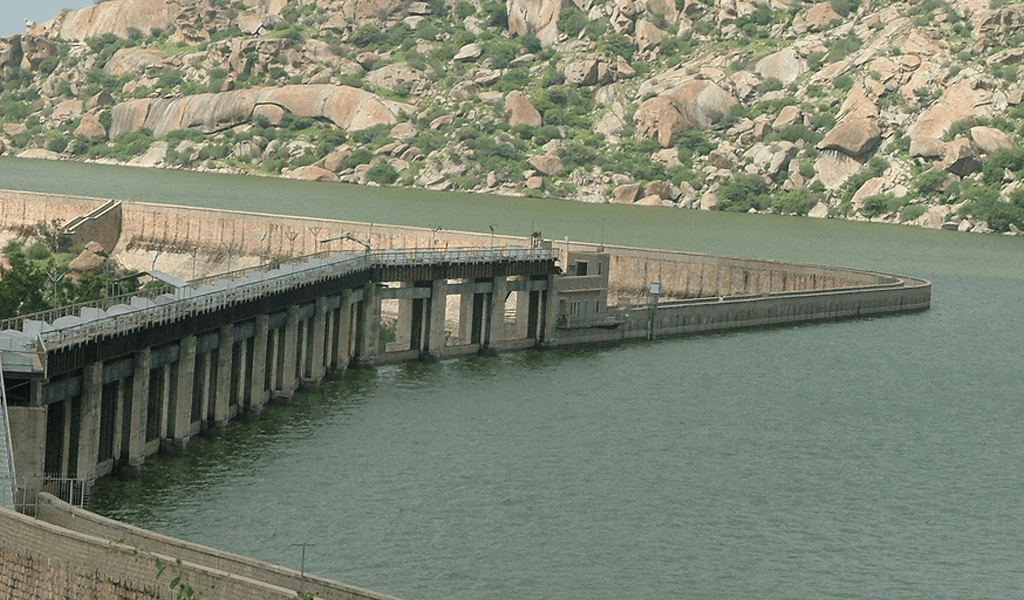
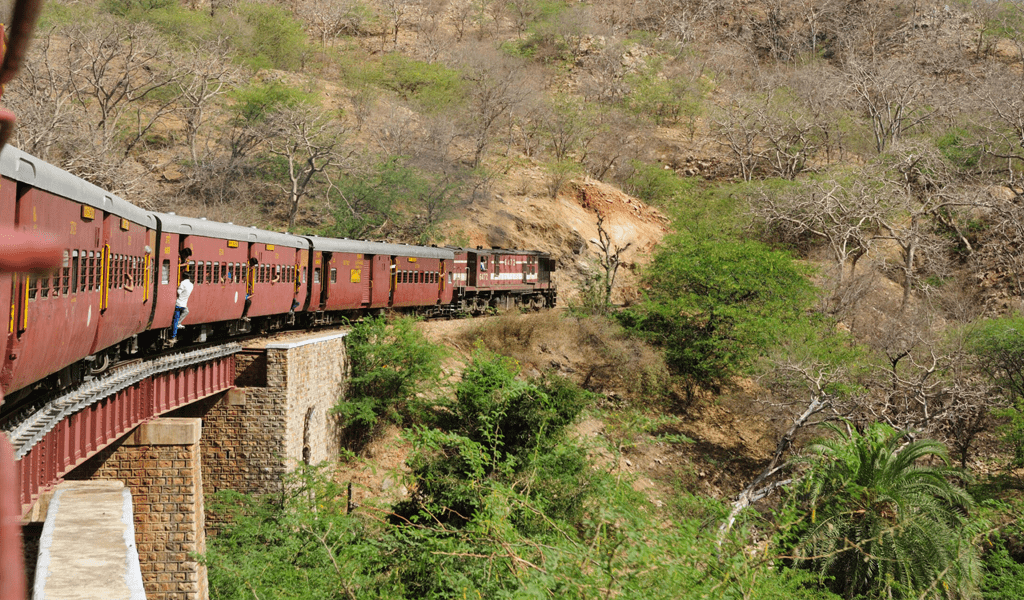
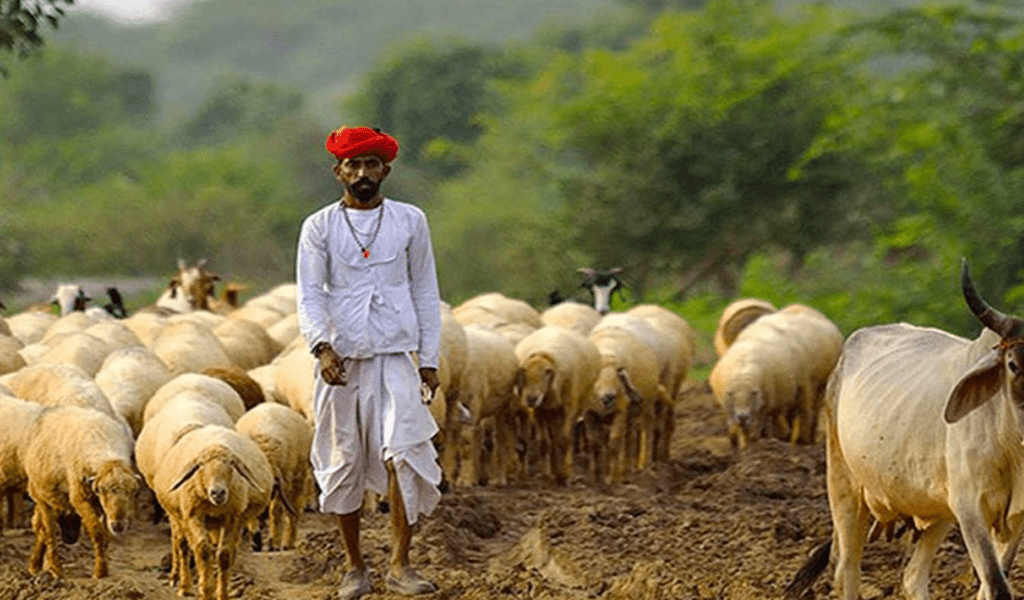
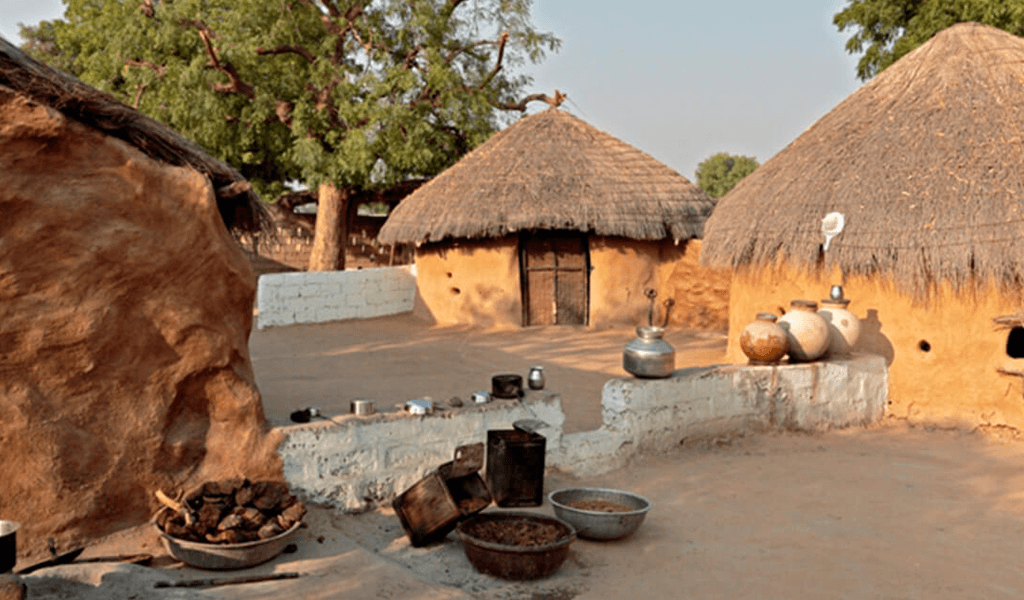
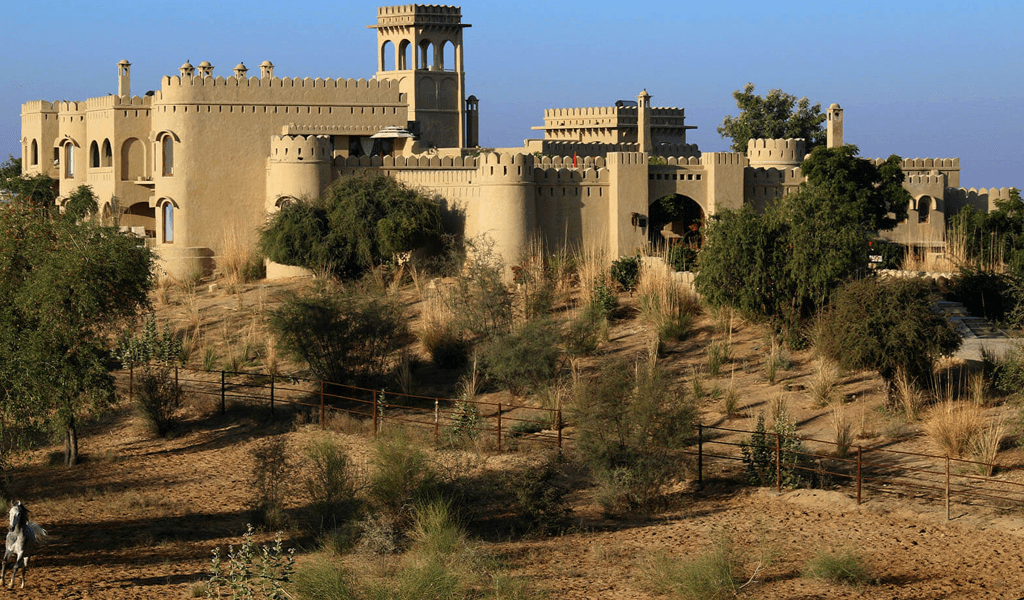
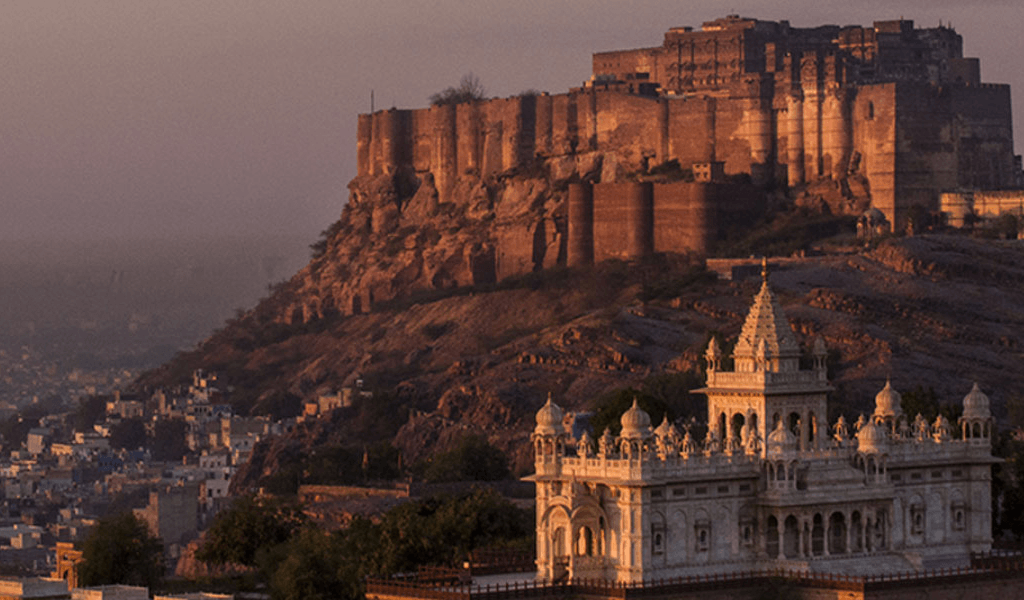
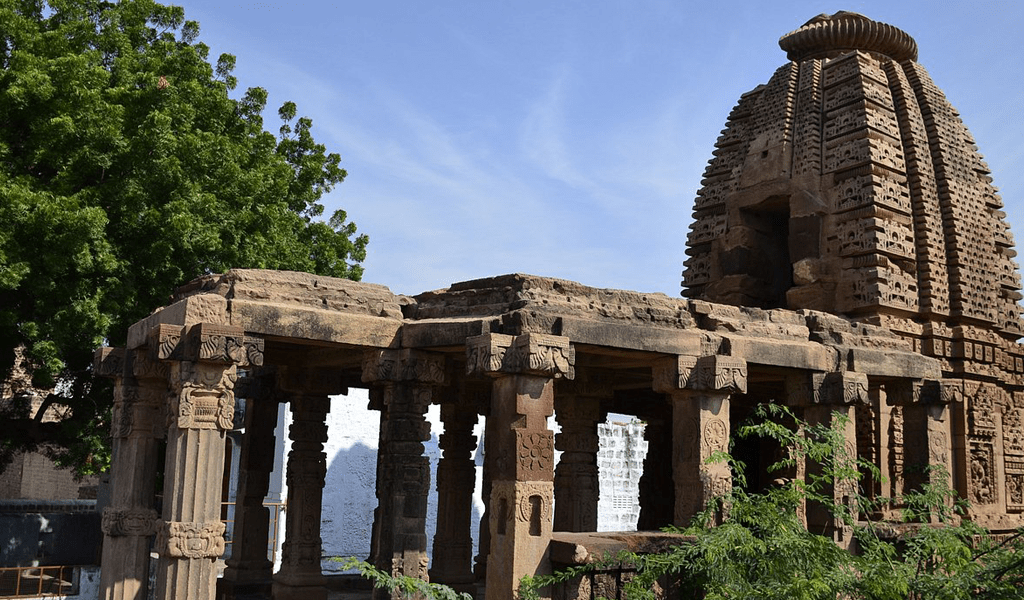
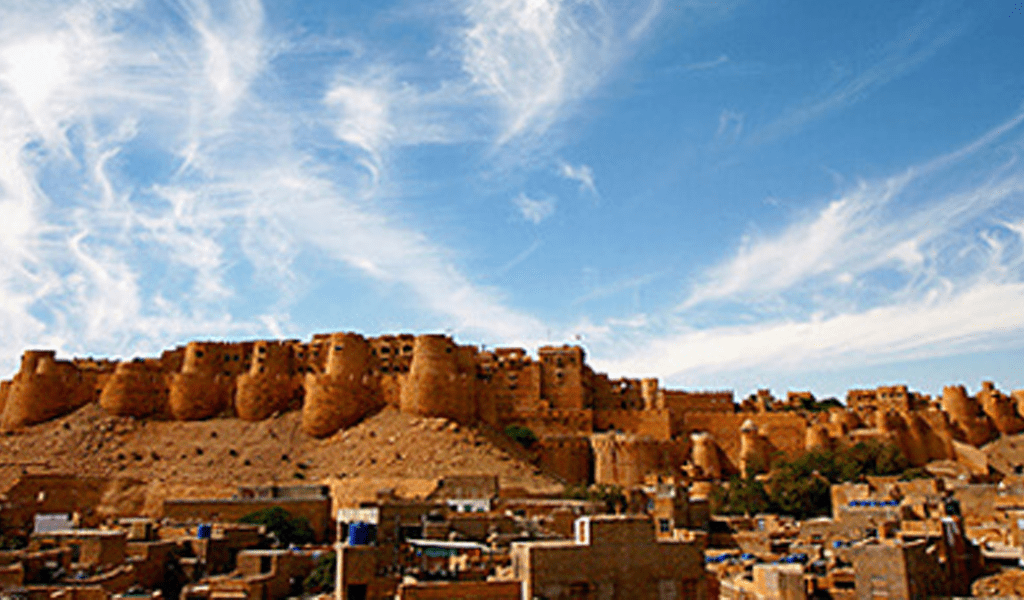
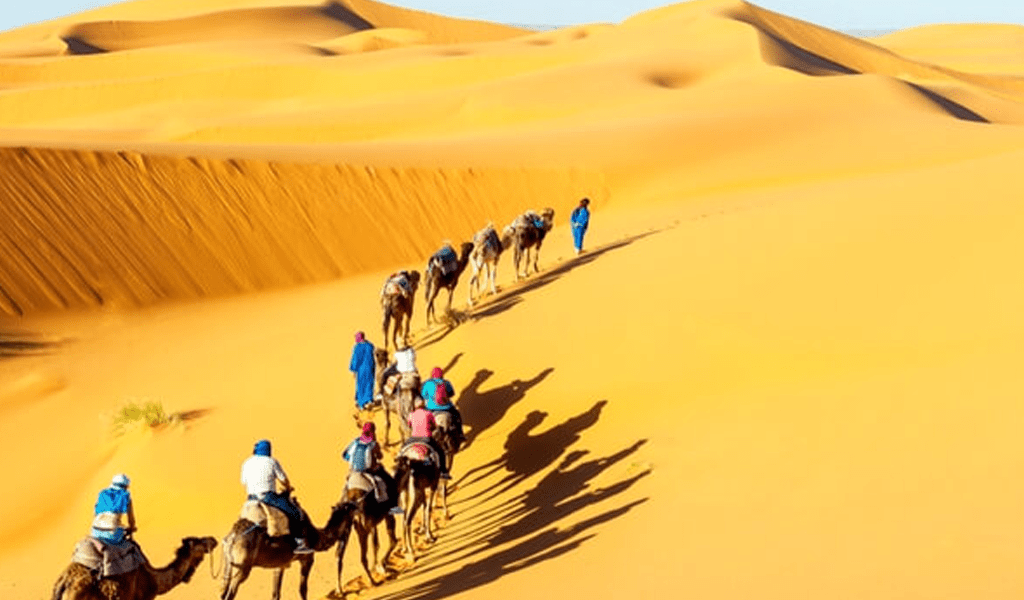
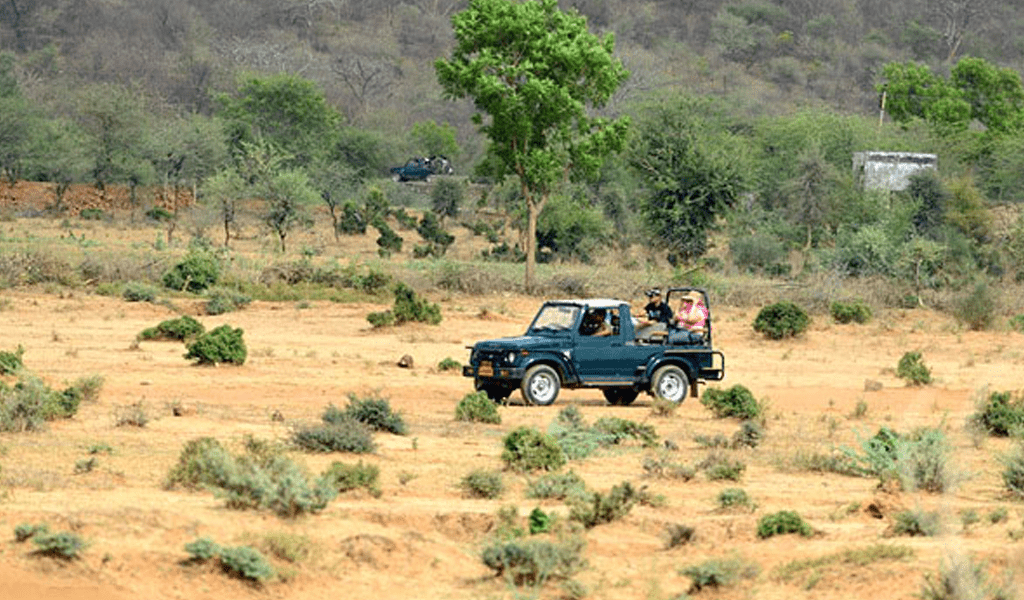
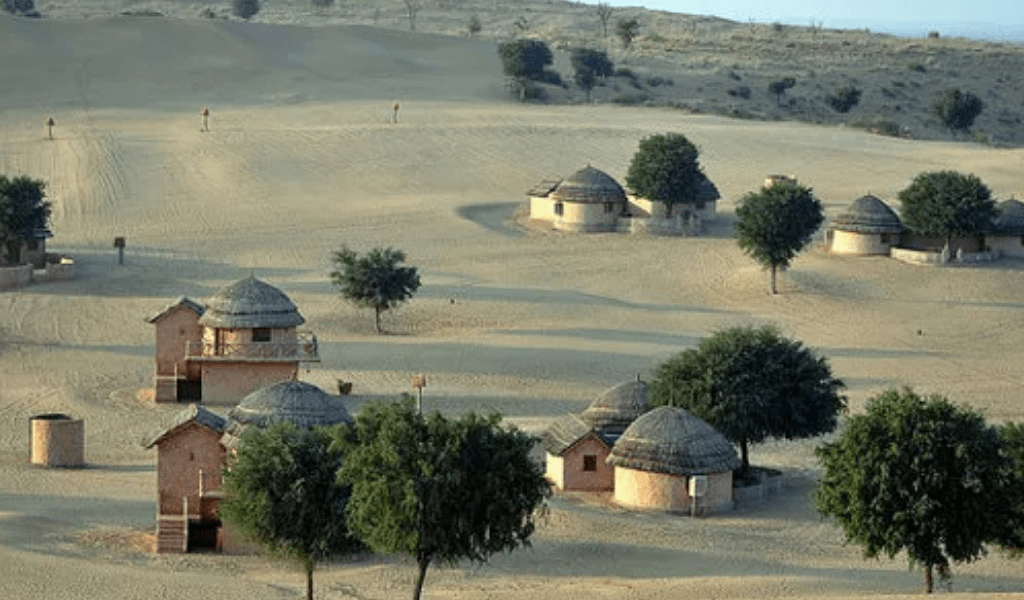
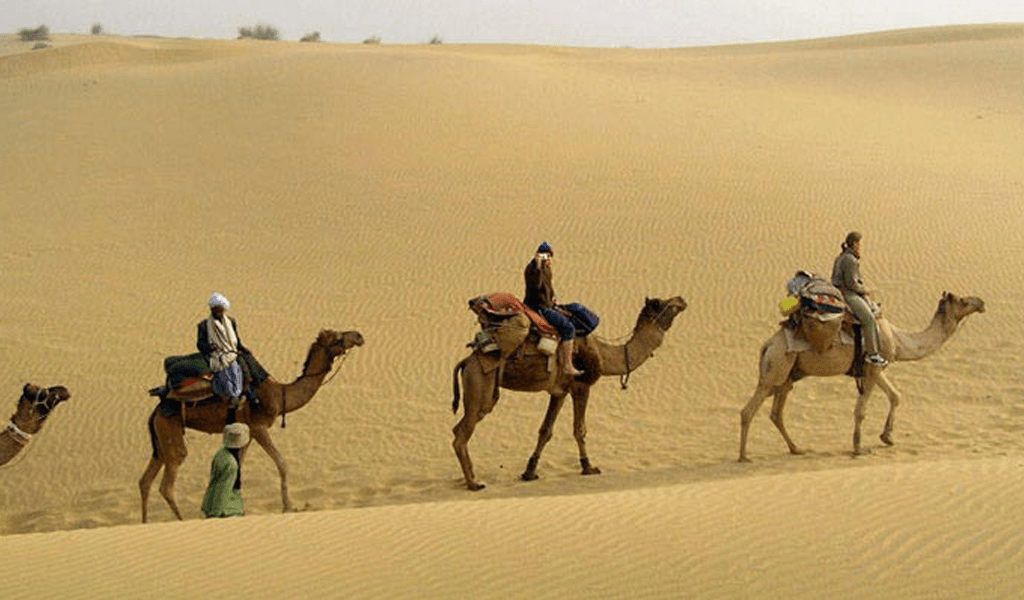
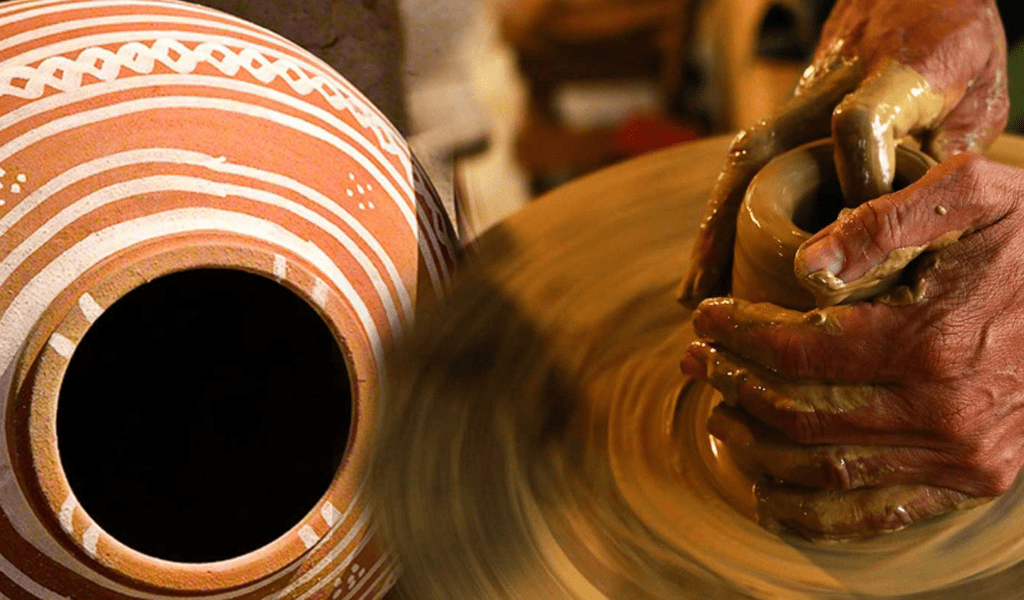
Duration
15 Nights & 16 Days
Highlights
- Meet & Assist
- Guided Sightseeing Tours
- Stay in City Luxury Hotels
- Jama Masjid, Parliament House, Gandhi Memorial, Red Fort, India Gate, Humayun’s Tomb and Qutab Minar – Delhi
- Mandawa Fort & Popular Painted Havelis (Mansions) – Mandawa
- Junagarh Fort and Royal Family Temple – Bikaner
- Jaisalmer Fort, Golden Fort (Sonar Quila), Jain Temples, Patwon Ki Haveli and Camel Ride on Sam Sand Dunes with Dinner & Kalbelia Dance – Jaisalmer
- Mehrangarh Fort and Jaswant Thada – Jodhpur
- Ranakpur Jain Temples
- Saheliyon Ki Baari, Jag Mandir Palace, Bhartiya Lok Kala Mandir, Lake Pichola Boat Ride, City Palace and Jagdish Temple – Udaipur
- Pushkar Lake, Brahma temple – Pushkar
- Hawah Mahal, City palace, Jantar Mantar, Albert Hall Museum and Amer Fort-Jaipur
- Fatehpur Sikri, Taj Mahal and Agra Fort-Agra
Cities Covered
Delhi, Madawa, Bikaner, Jaisalmer, Jodhpur, Uaipur, Pushkar, Jaipur, Fatehpur Sikri, Agra, Delhi
You will be met and assisted on arrival at Delhi Airport and transferred to your pre-booked hotel.
Rest of the day at leisure to relax. With old monuments and busy neighbourhoods subtly merging with a vibrant and contemporary cosmopolitan world, Delhi, the capital of India, is a fascinating tourist destination. Poised along the banks of River Yamuna, Delhi, which is almost 1,000 years old, offers a mesmeric mosaic of experiences, both heritage and contemporary. While the former honour the elegant ageing of centuries-old Delhi, the latter reiterate that the capital is the heart of Indian democracy, and can keep pace with the most advanced of the metropolitans of the world.
Overnight stay at the hotel.
Post breakfast, proceed for sightseeing of Old and New Delhi. Witness attractions like Jama Masjid, Parliament House, Gandhi Memorial, Red Fort, and India Gate.
Post lunch, visit Humayun’s tomb and Qutab Minar.
At the end, enjoy a light and sound show at Red fort in the evening.
Overnight stay at the hotel.
Post breakfast, checkout and drive to Mandawa.
Mandawa was once an important city in Rajasthan and was founded by the Rajputs in the 18th century. The main attraction here is the Mandawa Fort, around which the town developed. Ensconced in the Aravallis, the fort was established to protect the flourishing trading outpost of Mandawa in the Shekhawati region. Today, it has been converted into a heritage hotel and is famous for its painted arched gateway, beautiful frescoes, exquisite carvings, paintings of Lord Krishna and mirror work. The Mandwa Fort was built by Newal Singh, the first descendant of the Shekhawati rulers. Mandawa is also famous for its beautiful havelis that are a trademark of the Shekhawati region, which is also known as the world’s largest open-air art gallery.
On arrival, check-into the hotel. After resting for a while, proceed for sightseeing to explore Mandawa Fort and popular painted Havelis (mansions) of the Shekhawati region.
Overnight stay at the hotel.
Post breakfast, checkout and drive to Bikaner.
A vast expanse of golden undulating sand dunes surrounds the vibrant and bustling city of Bikaner, ensconced in the desert state of Rajasthan. Nestled in the Thar Desert, this ancient city is adorned with gigantic and spectacular forts and palaces that invite thousands of tourists across the globe. The old part of the city stands as a silent witness to the rich history of the region when it was ruled by Rao Bika, the prince of the Rathore clan, in 1488.
Surrounded by high stone walls, the older part of the city is a pot-pourri of culture and tradition. Five gigantic gates lead you into a labyrinth of lanes that are dotted with quaint bright red and yellow sandstone houses. At the same time, its modern counterpart takes you on a roller coaster, with its bustling bazaars, exquisite handicrafts and delicious cuisine. Bikaneri shawls, blankets, carpets, and candy are famous along with lacquerware handicrafts that make it a hotspot for shoppers. From beautiful glass work and attractive mojris (traditional shoes) to pottery, you will be spoilt for choice. While in Bikaner, don’t forget to buy the Geographical Indicator (GI) tag, bhujiya, which is a delightful snack.
On arrival, visit the famous Junagarh Fort, private temple of the royal family & Lalagarh Museum.
Post sightseeing, check-into the hotel.
Overnight stay at the hotel.
Post breakfast, checkout and drive to Jaisalmer.
On arrival, check-into the hotel.
Rolling hills of honey-hued sand dunes, vast barren expanses, contrasting colours and mesmerizing historical treasures, make up the stark beauty of the enchanting city of Jaisalmer. The city holds the still-inhabited Jaisalmer Fort at its heart, which seems to rise out of the desert like a mirage and looks ablaze as the golden rays of the sun bathe it.
Encircled by 99 bastions, this fairytale-like-fort enthrals you with its grandeur. This far-flung city of Rajasthan invites tourists from across the globe with its intricately carved temples, narrow streets and almost perfectly concealed delights, which can be explored through camel rides amidst the mystic desert. Jaisalmer has a history dating back to the prehistoric period, which is preserved in the Akal Wood Fossil Park.
Legend has it that Rawal Jaisal, the eldest heir of the Rawal of Deoraj, was passed over the throne of Lodurva and his younger half-brother was crowned king. In a quest to redeem himself, he went looking for a new capital when he came across a sage who told him an ancient prophecy. This led to Rawal Jaisal constructing a mud fort in the area in 1156 and naming it Jaisalmer after himself. Jaisalmer literally translates to hill fort of Jaisal. Its location on the ancient trade routes led to the fabled riches and indulgent style of architecture.
Jaisalmer is also known for its wood carvings, local artistry and fabulously rich cultural heritage of performing arts.
Afternoon at leisure to relax.
Overnight stay at the hotel.
Post breakfast, enjoy Jaisalmer city tour.
Visit Jaisalmer Fort also known as Golden Fort (Sonar Quila), (Palace & Jain temples at Fort), Patuon ki haveli & Nathmal ki haveli.
Afternoon at leisure to relax.
Later in evening, enjoy a camel ride on Jaisalmer’s mysterious Sam sand dunes with dinner around the bonfire and Kalbelia dance performance. Return to hotel after dinner.
Overnight stay at the hotel.
Post breakfast, checkout and drive to Jodhpur.
With a sea of sapphire-blue painted houses and guarded by the gorgeous Mehrangarh Fort, the city of Jodhpur, is an architectural marvel. A labyrinth of medieval lanes, interspersed with vibrant markets, criss-cross the city, which enjoys a languid pace of life.
To experience the soul of the city, head to its bustling bazaars that offer a fine selection of the spiritual Pichwai paintings, Jodhpuri pants or breeches, exquisite bandini or bandhej (tie and dye) sarees, beautiful badla embroidered lehengas and morchang, a popular Rajasthani folk music instrument. The city boasts a busy culinary scene and sampling local delicacies like the savoury pyaz-ki-kachori, the spicy mirchi bada and the thick and sweet makhaniya lassi, is an unforgettable experience.
As you explore further, Jodhpur charms you with its rich royal legacy that is evident in notable landmarks like the opulent Umaid Bhawan Palace, the majestic Jaswant Thada and the scenic Mandore Gardens, all of which were built by the city’s erstwhile rulers. A 10-km-long wall with eight huge gates divides the old and the new parts of the city, giving tourists an opportunity to experience the unique features of Jodhpur’s ancient past rubbing shoulders with its cosmopolitan present.
On arrival, check-into the hotel. Afternoon at leisure to relax.
Overnight stay at the hotel.
Post breakfast, proceed for sightseeing tour of Jodhpur.
Visit the Mehrangarh Fort, which has beautiful miniature paintings and huge courtyards, Jaswant Thada and Umaid Bhawan Museum. Afternoon at leisure to relax.
Overnight stay at the hotel.
Post breakfat, checkout and drive to Udaipur.
En-route visit 15th century Jain Temple of Ranakpur, on the banks of River Maghai. Featuring intricate designs akin to a fine piece of embroidered cloth, this temple stands as one of the most brilliant architectural monuments on the Indian subcontinent. Besides, the Ranakpur Temple is also the largest and most significant places of worship for the Jains. The massive temple structure, raised entirely in softly colored marble, stands atop a base of subterranean vaults, sprawling in an area of over 48,000 square feet. Entering into the temple complex, it is difficult for someone to not be mesmerized by the vivacity and scale of
its designs.
Note
Audio Guide with headphones (Audio guiding service available in different languages and included in the cost.) is mandatory for every foreigners. Your audio-guide will sheds light on
the temple’s Jain history.
Post sightseeing, resume driving to Udaipur.
Popularly known as the City of Lakes, serene Udaipur is the crowning jewel of royal Rajasthan. With shimmering lakes visible from almost every rooftop, fairytale palaces, sprawling havelis, revered temples and narrow lanes weaving through colourful markets as ancient as the city’s history, Udaipur’s charm is unmatched. Founded by Maharaja Udai Singh II in 1559, the city served as the capital of the kingdom of Mewar after Mughal emperor Akbar besieged its earlier power-centre Chittorgarh. Udaipur is also referred to as the Venice of the East, a title it has earned for being dotted with numerous lakes (seven to be precise)! Nestled in the mighty Aravalli range, surrounded by dense forests and craggy hills, and magical sunrises and sunsets turning its lakes into pools of gold, Udaipur is one of the most picturesque destinations in the country. Colonel James Tod of the East India Company, who was also a scholar, aptly described the city as “the most romantic place in the Indian subcontinent”.
Visitors can enjoy tranquil boating on Lake Pichola, the largest of Udaipur’s lakes, spend a day taking in the jaw-dropping opulence of City Palace, visit the time-weathered temples, shop at the art and curio stalls that line the streets, enjoy Rajasthani folk music and dance performances, taste mouth-watering cuisine or drive out of the city to discover legends hidden in the wooded Aravalli hills and the impregnable forts dotting its surroundings. No wonder then, Udaipur is one of the most popular tourist destinations in India.
On arrival, check-into the hotel.
Overnight stay at the hotel.
Post breakfast, proceed for sightseeing tour of Udaipur.
Visit City Palace, Saheliyon ki Baari, and the Bhartiya Lok Kala Mandir.
Afternoon at leisure to relax.
Later in the evening, enjoy picturesque sunset boat ride on Lake Pichola.
A visit to Udaipur is incomplete without a boat cruise in Lake Pichola – the historic 14th century lake made by a local banjara (gypsy) that was extended in the 16th century by Rana Udai Singh II to establish Udaipur, The picturesque boat ride on Lake Pichola not only provides the best scenic view of the lake and the mountains in the city, but also presents some of the most important historical monuments dotted along the lakeside or submerged within the lake.
Overnight stay at the hotel.
Post breakfast, checkout and drive to Pushkar.
Sprawled around the serene Pushkar Lake, the quaint town of Pushkar boasts a dramatic landscape of sand dunes, lakes, hills and forests. Steeped in spirituality, Pushkar, literally translated, means lotus flower, and is believed to be the seat of Lord Brahma. Thus, Pushkar is among the rare places to house a temple of Lord Brahma. A red-spired structure that was built during the 14th century CE, it invites devotees from far and wide. Legend has it that Lord Brahma once dropped a lotus on the ground, leading to the immediate creation of a lake, which he later named after the flower.
The soul of Pushkar vibrates in its streets and one can enjoy the city through the labyrinth of alleys and lanes, bazaars and the ghats. The Pushkar Fair (Pushkar Mela) that features a fete of cattle, horses and camels is famous all over the world. It is a seven-day affair that takes place during the months of October and November. The liveliness of the fair attracts nearly 2,00,000 people every year, including vendors, buyers and sellers of horses, camels and buffaloes. Various stalls such as those of hand looms, snacks, sweetmeats, ice crushes, bangles, camel saddles are set up to attract visitors.
On arrival, check-into the hotel.
Overnight stay at the hotel.
Post breakfast checkout and proceed for sightseeing tour of Pushkar, visiting Pushkar Lake, Brahma Temple and local market.
Afterwards, drive to Jaipur. The city of palaces and forts, interspersed with historical monuments and gardens that testify the grandeur of the Rajput kings, Jaipur is the gateway to the royal heritage of India. Also called Pink City, it remains suspended in time, with its heritage preserved in the overwhelming Hawa Mahal that gazes down at the bustling streets of Johari Bazaar.
A little away from the city centre, which is resplendent with state-of-the-art cinemas/ movie theatres, eateries, multiplexes, museums and parks, lies the arid hilly country dotted with forts that earlier stood as armoured sentinels of Jaipur. The biggest and the most awe-inspiring is the Amber Fort, which leaves one humbled with its expansive fortifications and grandeur.
Founded by Maharaja Jai Singh II in 1727 AD, Jaipur was the stronghold of the Rajputs, who gave it its everlasting legacy in the form of various heritage sites, arts and crafts, culinary curations etc. Typical Rajasthani cuisine, comprising lal maas, dal-bati-churma, ker sangri and other uncountable recipes, all hold limelight in the culinary culture of India. These can be enjoyed in the quintessential Rajasthani style of sitting cross-legged on mats on the floor and digging in the sumptuous thali, which features up to 20 dishes.
While one can enjoy the various offerings of the city as an outsider, what really sets Jaipur apart is its welcoming spirit that wins you over with its warmth. To symbolize this hospitable culture, the older part of the city was painted pink under the reign of Maharaja Ram Singh in 1876. Although this was done during the British rule when the Prince of Wales came to visit India, many houses are still adorned with the hue to reiterate their signature slogan of ‘Padharo Mhare Desh’ (Welcome to my Land).
Jaipur was designed by architect Vidyadhar Bhattacharya in the early 18th century. Through the years it has transformed into a bustling metropolis while continuing to retain its old-world charm.
A kaleidoscope of many moods and hues, Jaipur is also a fantastic shopping destination. From colourful puppets and bandhni sarees to silver jewellery and lac bangles, it offers a host of knick-knacks and souvenirs to take home along with many fond memories.
On arrival, check-into the hotel.
Later this afternoon, proceed for the Jaipur city tour and visit Hawah Mahal, City Palace, Jantar Mantar and Albert hall museum.
Overnight stay at the hotel.
Post breakfast, proceed to visit Amber Fort (Amer Fort), sitting atop a hill, and rising like a sentinel guarding the city. Commissioned in 1592 by Maharaja Man Singh I, the fort is a fine blend of Rajput and Mughal architectural styles, and boasts a grand palace, temples and several ornate gates. Built entirely of red sandstone with white marble work, the UNESCO World Heritage Site is a picture of opulence and grandeur, set against a stark desert backdrop and rolling hills.
One can either walk up the wide winding uphill road to reach the main gate of the fort or hire a jeep or elephant.
As you get closer to the massive gate, you realize why it was considered almost impregnable by the enemy, when the royal family used to reside here, before they shifted the capital to Jaipur. As you enter, you cross the Suraj Pol (sun gate), which leads to the main courtyard called Jaleb Chowk. Diagonally opposite is the Chand Pol (moon gate). From Jaleb Chowk, a flight of stairs leads up to the small Siladevi Temple, whose doors feature relief work in silver.
The main palace is up next. It includes the Diwan-e-Am (hall for a private audience with the king) with carved columns and latticed galleries, the king’s apartments, the gate Ganesh Pol with beautiful arches, and Jai Mandir or Sheesh Mahal. Stand at one of the many arched windows of the palace and take in the rolling shrub land stretching up to the horizon and the scenic Maota Lake at the foot of the fort. Even after centuries, it’s easy to imagine yourself as a Rajput king, who would stand here and survey his kingdom.
Sheesh Mahal or the mirrored palace is one of the most popular attractions here that draws the largest number of tourists. It is breathtaking with fine marble work and cut-glass and mirror inlaid designs on ceilings and walls. It is said that at night, as earthen lamps flickered inside the hall, the numerous mirrors reflected the light, creating the atmosphere of a start-lit sky.
Afternoon free to explore Jaipur city on your own.
Overnight stay at the hotel.
Post breakfast, checkout and drive to Agra, en route visiting Fatehpur Sikri.
Mughal emperor Akbar built his capital at Fatehpur Sikri between 1572 and 1585 AD. It was constructed using red sandstone. It is said that the emperor, who wished for a son, went to Sikri to get blessed by sufi saint, Sheikh Salim Chishti. He was soon blessed with a son and was prompted to establish his capital here, building a beautiful mosque and three palaces, one each for his three favourite wives. He named the city Fatehpur Sikri, meaning the city of victory. Likewise, he also named his son Salim, after the saint who had blessed him.
On arrival in Agra, check-into the hotel.
The city of the Taj Mahal, one of the seven wonders of the world, Agra is a popular tourist destination. Steeped in history, this ancient city is dotted with monuments, architectural wonders and beautifully landscaped gardens, which are remnants of the Mughal reign’s majestic legacy. The city also enjoys a vibrant culinary scene while preserving its exquisite arts and crafts.
Agra finds a mention in the epic Mahabharata, where it is referred to as ‘Agraban’ or an integral part of the Braj Bhumi or the land of Lord Krishna. A lot of significant historical events in the city are said to have unfolded during the reign of Raja Badal Singh, a Sikarwar Rajput king, who is believed to have founded the city in 1475.
Agra transformed into a hub of art, culture, learning and commerce. The city’s lip-smacking food, awe-inspiring monuments, and arts and crafts stand as relics of this illustrious antiquity. Its rich repertoire of arts and crafts has seeped into its modern personality too:
Agra is a haven for crafts like marble and soft stone inlay work.
Overnight stay at the hotel.
Early morning, visit Taj Mahal by the “Rising Sun” – return to the hotel for breakfast.
Taj Mahal, a UNESCO World Heritage Site, it is featured in almost all literature about India and is one of the most enduring images of the country. Its name is believed to have been drawn from the Persian language: ‘Taj’ means crown and ‘Mahal’ means palace, thus making this the palace of the crown. Interestingly, the queen it was built in memory of, originally named Arjumand Begum, held the name Mumtaz Mahal, which meant the crown of the palace. Although it is best known as a symbol of love, a grieving emperor’s ode to his deceased queen, another legend sees the Taj Mahal as an embodiment of Shah Jahan’s vision of kingship. The story goes that he sought to build something akin to heaven on earth, a spectacular, unbelievably beautiful monument that reinforced the power as well as the perceived divinity of the monarch as next only to the Almighty.
It is also widely believed that Emperor Shah Jahan invited artisans from Italy and Persia to work on this marble monument. A fascinating aspect of this structure is that it looks the same from all four sides, except the one that faces the River Yamuna. This side is said to have been especially embellished to serve as the main entrance for the emperor. Shah Jahan would approach the Taj Mahal from the river, aboard a barge, while the entrance used by tourists today served, at the time, as an entryway for soldiers and common people.
There are intricate inscriptions on all four entrances, while marble carvings and pietra dura mosaics adorn the walls. Lapis-lazuli, cornelian, mother-of-pearl, agate and emerald are some of the precious gems and stones that were once used in its design. It is said that work on its construction began in 1631. Legend has it that it took 20 years to complete this architectural marvel.
It is also riddled with optical illusions and masterful architectural safeguards. As one first beholds the monument from the main gate, for instance, the Taj Mahal looks large and imposing, but as you move closer, it appears to shrink in size. Also, the minarets surrounding the edifice, while perfectly upright to the naked eye, have actually been constructed to lean away from it so that, should a disaster like an earthquake come about, they would fall away from and not on the mausoleum.
Post breakfast, proceed to visit Agra Fort.
Built by Mughal emperor Akbar in 1565 AD, Agra Fort is a majestic sandstone built as an ode to the magnificence of the Mughal Empire. Encompassing within its 2.5-km-long enclosure walls a stunning imperial city, the fortress is shaped like a crescent, its eastern wall flanked by the River Yamuna. It is said that the construction of the fort was originally begun by Emperor Akbar, but completed by his grandson Shah Jahan, who added most of the marble monuments here. There were originally four gates for entrance, two of which were walled up, and only one is open today – the Amar Singh gate.
Agra Fort is widely considered to be a masterpiece of planning, design and construction. Some of its other internal structures include the stunning Moti Masjid, Diwan-i-Khas (hall of private audience) and Diwan-i-Aam (hall of public audience), once home to the legendary Peacock Throne that was eventually taken to Red Fort in Delhi when Shah Jahan shifted his capital there. There are two prominent mosques inside the fort – Nagina Masjid was built by Shah Jahan as a private mosque for the ladies of the court and Mina Masjid is believed to have been built by him solely for his own use.
Afternoon at leisure to relax.
Overnight stay at the hotel.
Post breakfast, checkout and transfer to Delhi airport for flight to onward destination.
Golden Triangle with Forts & Palaces of Rajasthan
- Starting from Euro 1432 per person for 15 Nights & 16 Days based on best rating 3 Star hotels for two paying pax.
- Starting from Euro 1691 per person for 15 Nights & 16 Days based on best rating 4 Star hotels for two paying pax.
NOTE :
- Above rates valid from 01 Oct 2024 to 31 March 2025
- Prices given above not valid during festive season (Dussehra / Diwali / Christmas / New Year) Long Weekends & blackout dates.
Inclusions
- Taj Mahal visit at sunrise.
- Jeep Ride at Amber fort in Jaipur.
- Assisted arrival & departure transfers.
- Mineral water bottle available in the car.
- Monument entry charges as per the itinerary.
- Exclusive boat ride on Lake Pichola in Udaipur.
- Battery Rickshaw ride at Taj Mahal – Agra & Fatehpur-sikri.
- Toll tax, Parking, driver expenses and all other applicable taxes.
- Camel Safari at Sam Sand dunes with dinner & Kalbelia dance in Jaisalmer.
- 15 Nights’ Accommodation on Twin/Double sharing with daily buffet breakfast in 3 Star category hotels.
- English speaking guide for all sightseeing tours in Delhi, Jaipur, Agra, Mandawa, Bikaner, Jaisalmer, Jodhpur, Udaipur, Pushkar, Jaipur & Agra as per the program.
- Exclusive Air Condition private car for airport transfers, sightseeing, and excursions as per the program, with well experience, professional driver.
Exclusions
- Visa
- Travel & health insurance.
- Any Domestic / International flight fare.
- Any extra meal not mentioned in the inclusions.
- Camera fees in Monuments and parks where applicable.
- Anything that not specifically mentioned in above inclusions.
- Festive season (Dussehra / Diwali / Christmas / New Year) Long Weekends & blackout date supplements.
- Any increase in fuel price, government and state taxes shall be charged extra at the time of confirmation.
- Personal nature Expenses i.e. Telephone Calls, Laundry, Soft / Hard Drinks, Meals, Tipping, Portage & items of personal nature etc.
- Any expenses for unfortunate circumstances like cancellation/flight delay/hike in fare or for any other similar reason or for natural calamities.
Payment Policy
- 30% of the Invoice value at the time of Reservation (Soon after you receive the confirmation mail and invoice).
- 70% of the Invoice value 60 days before arrival.
Cancellation policy
- Hotels cancellation as per hotels policies.
- Flight cancellation and refunds as per airlines policies.
- Cancellation request on telephone will not be accepted.
- Only written request for cancellation by official email will be accepted.
- Cancellation received 60 days before check-in date: 10% of invoice amount (banking fee + administration fee).
- Cancellation received 59-45 days before check-in date: 25% of invoice amount (banking fee + administration fee).
- Cancellation received 44-30 days before check-in date: 40% of invoice amount (banking fee + administration fee).
- Cancellation received 29-15 days before check-in date: or No Show: No Refund.
